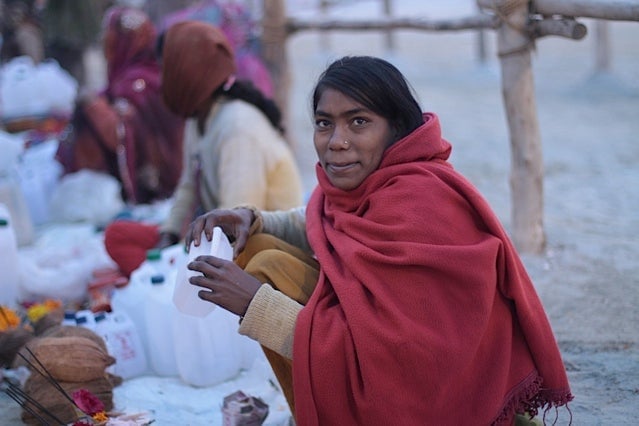Photos: A most important day at the Kumbh Mela, population 30 million and counting
Today was one of the main bathing days for the Kumbh Mela. Dawn is perhaps the best time to witness the ancient ritual of bathing where the Ganga, or the Ganges river, meets the Yamuna. Together with a colleague, I descended from the hill where our tent was perched. He was a cardiologist from San Francisco who completed our team of four from Harvard’s FXB Center for Health and Human Rights. Harvard researchers have been here for weeks to understand the logistics, economy, and population control of one of the largest gatherings of humans ever. I wrote about this in a previous Quartz story and will document our journey in coming days.
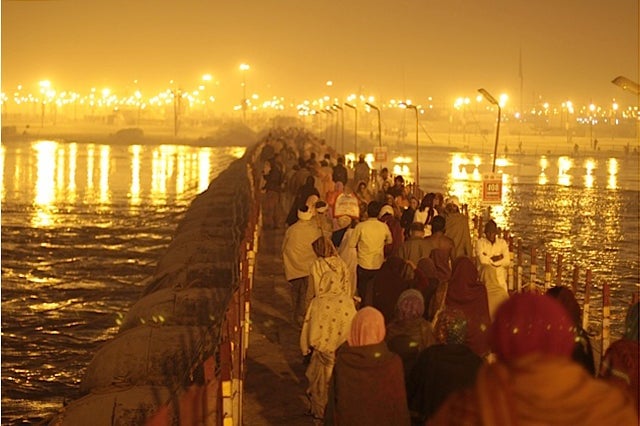
Today was one of the main bathing days for the Kumbh Mela. Dawn is perhaps the best time to witness the ancient ritual of bathing where the Ganga, or the Ganges river, meets the Yamuna. Together with a colleague, I descended from the hill where our tent was perched. He was a cardiologist from San Francisco who completed our team of four from Harvard’s FXB Center for Health and Human Rights. Harvard researchers have been here for weeks to understand the logistics, economy, and population control of one of the largest gatherings of humans ever. I wrote about this in a previous Quartz story and will document our journey in coming days.
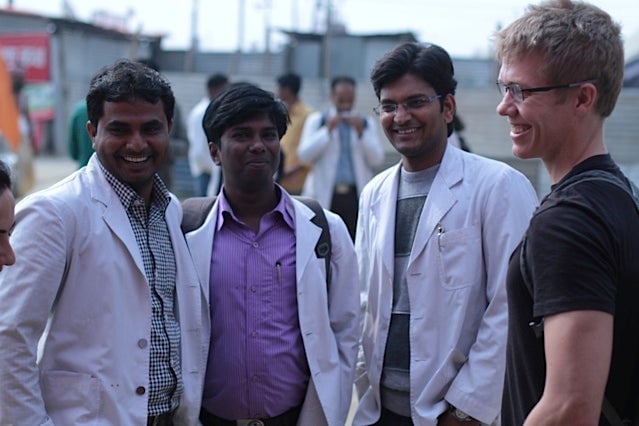
We heard the Kumbh long before we entered its hazy, golden streets. In fact, if you close your eyes anywhere in the river valley where this pop-up mega city has been erected, you can hear the constant, occasionally thunderous hum—car horns, public announcements and sacred song punctuated by the occasional blast of fireworks. But don’t close your eyes for too long. Cars and motorbikes speed down muddy makeshift roads made of endless connections of steel plates. One must keep their wits about them to walk safely on the Mela’s bustling avenues.
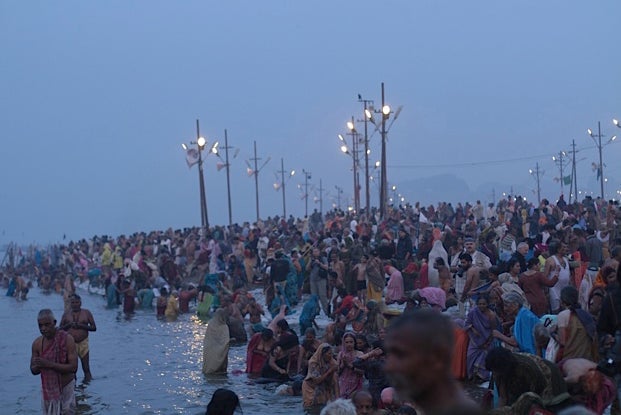
The crowds are thick but subdued near the water, some anticipating and others savoring the memory of the morning’s sacred dip. The morning sun is full and low on the horizon, shrouded in a haze of smog. A family gathers at the water’s edge to light a paper diya, a handmade paper boat bearing a small, lit candle. Their prayers complete, they launch the offering into the Sangam, the confluence of the holy rivers. A long-haired Sadhu, or religious ascetic, plunges fastidiously into the shallows again and again, drawing the attention of a gaggle of foreign photographers. A woman squats shivering on the bank and tries to cover her cold, wet shoulders with a dry sari.
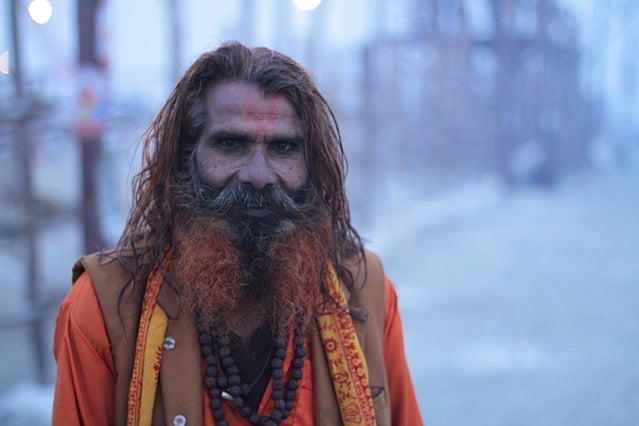
The crowds are quiet, attentive to the task at hand. I, too, keep silent, feeling more than ever that I am in another’s world. I put my camera away and give what I hope is a friendly nod to a boy selling diyas made of large leaves. He knows I am a stranger, but his smile bridges the gap and welcomes me all the same.
